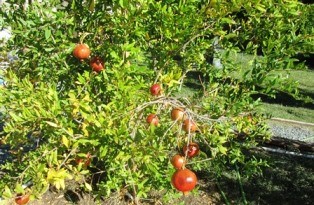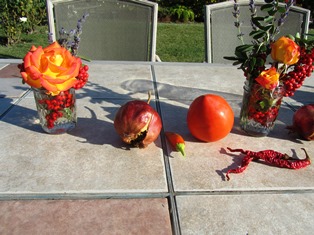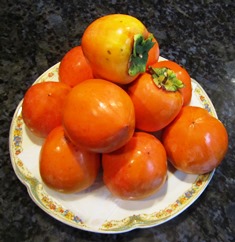How to Repay the Thoughtful Gift of a Truckload of Manure
I begin obsessing about soil and manure this time of year after the summer garden is gone. The old adage of: take care of the soil and it will take care of you (via your plants) is really true. Out here on the farmette, the clay soil is so heavy that it cracks open in fissures during summer, so we are always working to improve it.
Recently, a generous friend brought us a truckload of horse manure. It was no small truck either. The manure seemed mostly aged and I could easily rake it into our flower beds and little lawn. Some of though is still relatively green, not aged, and I worry about using it to grow my winter crop of vegetables for fear of E-coli contamination.
There’s a new area where we are debating or not to put down a stone floor and just grow trees and flowers in a container wall on two sides. It might be the perfect place to use some of that horse dung.
In the meantime, on the property behind ours, the horse manure has been spread out with a bobcat to keep the growing areas fertile for the trees that were planted there nearly four or five decades ago.
There are all kinds of manures one can use in the garden, from bat guano and worm casings to animal waste products–horse, cow, sheep, steer, turkey, rabbit, and chicken, for example.
You can get manure tested, much like you can soil, to detect levels of nitrogen, phosphorus, and potassium. Not all manures are high in nitrogen, which is loved by many gardeners for that sudden growth and burst of bloom. Some manures, like cow and horse, also can carry seeds of weeds or whatever the animal has grazed on, which can emerge in your garden.
Most manures can be made into a fertilizer “tea” by mixing with water. Whether you apply aged manure or manure tea, always wash your fruits and vegetables well before eating to reduce the risk of consuming contaminated fruit or produce.
We appreciate our friend’s gift. Now . . . we wonder how to repay his kindness. I’m thinking a basket of persimmons and pomegranates, a French sugar pumpkin, a dozen organic eggs, and jars of jam and honey.
Choosing the Milk for the Cheese …Goat or Cow?
Imagine the taste on your palate of warm figs with a dollop of goat cheese right off the grill, accompanied by a lovely California red wine. Now re-imagine that cheese produced by your own goat. This is my new dream.
For me, the taste of cheese and yogurt produced from goat’s milk is preferable to the taste of the same products made from cow’s milk. Lately, I’ve been considering the pros and cons of owning a goat versus a cow.
My list goes something like this:
Goat:
Smaller (easier to transport, shelter, and handle)
Eats less feed, therefore costs less to keep
Produces less milk (which is an advantage when your family is small and doesn’t drink much milk)
Goat manure is dry (arrives on the ground in pellet form)
Goats are great foragers and keep weeds and grasses nibbled away
Cow:
Bigger (needs larger shelter and transportation)
Eats more, drinks more, therefore costs more to keep
Produces more milk than goats
Cow manure is wet (turns into dry “pies”)
Cows need pasture and feed (cows eat roughly ten times as much as a goat)
I’m thinking I’d need a farm to own a cow; but for my little farmette, a goat makes more sense. As for choosing the type of goat; well, that’s another process. For now, I think I’ll pick some summer figs and melt a little goat cheese on top. Wine anyone?
 Facebook
Facebook Goodreads
Goodreads LinkedIn
LinkedIn Meera Lester
Meera Lester Twitter
Twitter






